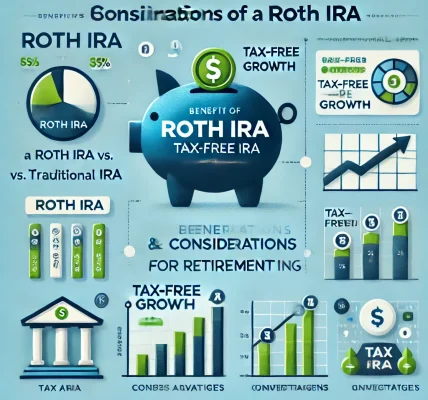Introduction
Social Security is a critical component of retirement planning, providing financial stability to millions of retirees. However, many individuals fail to optimize their benefits, leading to lower payouts during their retirement years.
In this blog, we’ll cover:
✔ How Social Security works
✔ Factors affecting your benefits
✔ Strategies to maximize Social Security payouts
✔ Common mistakes to avoid
By the end of this guide, you’ll be equipped with the knowledge to make informed decisions about your Social Security benefits and secure a comfortable retirement.
Understanding Social Security & Retirement Benefits
Social Security is a government-backed program designed to provide financial support to retirees, disabled individuals, and survivors. The benefits are primarily based on:
✔ Lifetime earnings – The more you earn (up to a limit), the higher your benefits.
✔ Years worked – A minimum of 10 years (40 credits) is required to qualify.
✔ Retirement age – The age at which you start claiming benefits significantly impacts your payouts.
📌 Fact: In the U.S., Social Security replaces about 40% of pre-retirement income for an average worker.
Key Factors Affecting Your Social Security Benefits
Several factors influence how much you receive in Social Security benefits. Understanding these can help you make better financial decisions.
1. Full Retirement Age (FRA) & Early Claiming
Your Full Retirement Age (FRA) is the age at which you are eligible for 100% of your Social Security benefits. It depends on your birth year:
| Year of Birth | Full Retirement Age (FRA) |
|---|---|
| 1943 – 1954 | 66 years |
| 1955 | 66 years, 2 months |
| 1956 | 66 years, 4 months |
| 1957 | 66 years, 6 months |
| 1958 | 66 years, 8 months |
| 1959 | 66 years, 10 months |
| 1960 & later | 67 years |
🔹 Claiming before FRA (as early as 62 years) reduces benefits by up to 30%.
🔹 Delaying beyond FRA (up to 70 years) increases benefits by 8% per year.
💡 Tip: If possible, wait until age 70 to maximize your benefits.
2. Earnings Record & Work History
Social Security benefits are calculated based on your highest 35 years of earnings.
✔ If you worked less than 35 years, Social Security will count $0 for missing years, lowering your benefits.
✔ If you had low-earning years, working a few extra years at a higher salary replaces those lower years and increases your benefit amount.
💡 Tip: Consider working a few additional years if you have gaps or low-income years in your record.
3. Spousal & Survivor Benefits
Social Security offers spousal and survivor benefits, providing additional financial support to couples.
✔ Spousal Benefit – If you’re married, you can claim up to 50% of your spouse’s benefit (if it’s higher than your own).
✔ Survivor Benefit – If your spouse passes away, you may receive 100% of their benefit if you meet eligibility requirements.
💡 Tip: Couples should coordinate when to claim benefits to maximize lifetime payouts.
4. Taxes on Social Security Benefits
Depending on your total income, your Social Security benefits may be taxed.
| Filing Status | Combined Income | % of Benefits Taxed |
|---|---|---|
| Single | Below $25,000 | 0% |
| Single | $25,000 – $34,000 | Up to 50% |
| Single | Above $34,000 | Up to 85% |
| Married (Joint) | Below $32,000 | 0% |
| Married (Joint) | $32,000 – $44,000 | Up to 50% |
| Married (Joint) | Above $44,000 | Up to 85% |
💡 Tip: Manage withdrawals from 401(k), IRA, and other income sources to reduce taxable Social Security benefits.
Top Strategies to Maximize Social Security Benefits
1. Delay Claiming Until Age 70
✔ If you claim benefits at 70 instead of 62, you can receive up to 76% more per month.
✔ Best strategy for individuals with longer life expectancy and other retirement income sources.
2. Work for At Least 35 Years
✔ Avoid earning years with $0 in your record to maximize your benefit calculation.
✔ If possible, replace low-earning years with higher earnings.
3. Consider Spousal Benefits
✔ Married couples should analyze whether one partner should claim spousal benefits while delaying their own.
✔ Divorced individuals (married for at least 10 years) may claim spousal benefits on their ex-spouse’s record.
4. Avoid Claiming While Still Working
✔ If you claim before FRA and earn above the earnings limit ($22,320 in 2024), your benefits may be reduced.
✔ Post-FRA, there is no penalty for working and claiming benefits.
5. Reduce Tax Liability
✔ Withdraw strategically from 401(k), IRA, and Roth IRA accounts to keep taxable income lower.
✔ Relocate to tax-friendly states (like Florida, Texas, Nevada) that don’t tax Social Security benefits.
Common Mistakes to Avoid
🚫 Claiming Benefits Too Early Without a Plan – Reduces lifetime benefits significantly.
🚫 Ignoring Spousal & Survivor Benefits – Couples should strategize to maximize benefits.
🚫 Failing to Work at Least 35 Years – Can result in lower Social Security payouts.
🚫 Not Considering Taxes on Benefits – High-income retirees may lose up to 85% of benefits to taxes.
Final Thoughts: Maximizing Your Social Security Benefits
Social Security is a valuable retirement tool, but proper planning is essential to get the most out of it. By understanding when to claim, how to optimize spousal benefits, and how to reduce taxes, you can significantly increase your lifetime payouts.
Key Takeaways:
✅ Wait until 70 to claim for maximum benefits.
✅ Work at least 35 years to ensure a higher payout.
✅ Coordinate spousal benefits for maximum family security.
✅ Minimize taxable income to reduce Social Security taxes.




